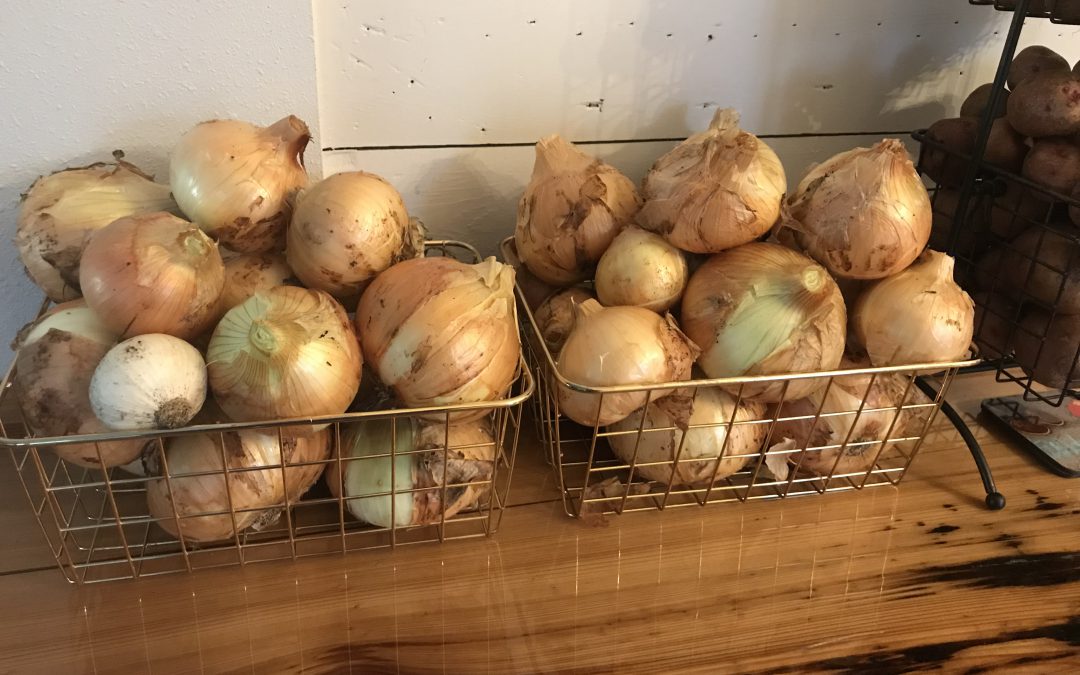
by Daniel J. Leonard | Dec 15, 2021
For many people in the Panhandle, gardening season begins when the weather warms in spring and nurseries start setting out tomato transplants. While I understand the allure of the yummy summer veggies and spring/early summer are the most traditional times to garden, cultivating a winter garden in the Panhandle unlocks many tasty options. Among these cool-season garden veggies is a classic southern staple that is among the easiest and most rewarding of all vegetables to grow, sweet onions!
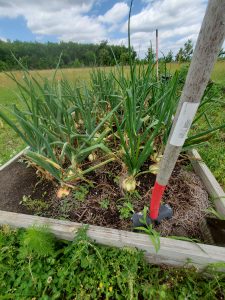
‘Texas Super Sweet’ Onions almost ready for harvest in a Calhoun County garden. Photo courtesy of Joe Leonard.
Sweet onions are very popular in the culinary world for their mild flavor and soft texture and are among the most widely grown group of onions across the world, but the most famous of them, Vidalia’s, hail from Georgia! Despite its fame, the “Vidalia” onion is actually nothing more than a trademarked name for a specific variety of sweet onion that was bred in Texas (‘Yellow Granex’ and its derivatives), grown in a 20-county region in South Georgia with excellent onion-growing soil, and made famous by excellent marketing from the Vidalia Onion Committee. While they can’t be called Vidalias legally, you can absolutely grow your very own Vidalia type sweet onions at home here in the Florida Panhandle!
Sweet Onions are most easily grown at home if purchased in the fall as “sets”. Sets are small bulbs that have been started, harvested, dried to prevent rotting during storage, and shipped to garden centers ready to be “set” out in home gardens. Sweet onions may also be grown from seed but take much longer and have a lower success rate. When browsing onion set varieties for purchase at garden centers or in seed catalogues, make sure to purchase a short-day “Granex” type like “Texas Super Sweet” or similar. It is critical to remember that sweet onions are classified by how many hours of daylength they require to produce bulbs. The three classifications are Short, Mid, and Long-Day. Since sweet onions require cool weather to develop properly, Floridians must grow short-day varieties to compensate for decreased daylight hours in the winter. In the less hot Northern states, long-day sweet onions are grown in the summer, where they’ll be able to soak up 15-16 hours of daylight. Therefore, for best results in the Panhandle, select ONLY short-day onion varieties.
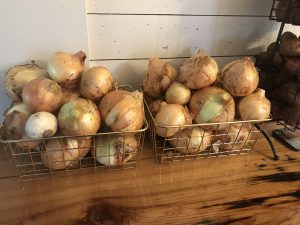
‘Texas Super Sweet’ Onions that have been harvested and are ready for use! Photo courtesy of Daniel Leonard.
Once you’ve selected your onion sets in the fall, they can be planted in the garden anytime from early October to mid-December. Individual bulbs should be planted about an inch deep in well-drained garden soil with high organic matter content (mushroom compost, composted manure, or other rich organic matter works) and spaced 4-6” between plants and about a foot between rows. Onions in general, and sweet onions in particular, are heavy feeders and require ample nutrition to meet their potential! To meet these fertility needs, I apply a slow-release fertilizer like Osmocote or a Harrell’s product at planting and supplement that with either a quick release granular or liquid fertilizer monthly during the bulb enlargement phase. Sweet onions also have a shallow root system and require frequent watering to develop properly and avoid splits, doubles, and small bulbs. Don’t let your onion bed dry out!
Finally, sweet onions planted in late fall/early winter are normally ready to harvest in April and May. However, rather than relying on a calendar, begin harvesting your onions when the tops start to turn yellow and fall over, this indicates maturity. After harvesting, allow your onions to “cure” with tops and roots still attached for a couple of weeks outside in a shaded, protected area. Once they’ve had an opportunity to “cure”, remove tops and roots and store the cured bulbs in a cool, dry place (a dark pantry in an air-conditioned room or the refrigerator crisper drawer work fine) and use at your convenience!
While they can’t be called Vidalias, sweet onions grown at home are oh so rewarding and very tasty! Provided they are planted in quality soil, receive plenty of water and fertilizer, and are harvested/stored correctly, sweet onions will provide a delicious, home-grown culinary treat throughout the year! For more information about growing onions in the home garden or any other horticultural/agricultural topic, contact us at the UF/IFAS Calhoun County Extension Office. Happy Gardening!

by Ashley Stonecipher | Sep 23, 2021
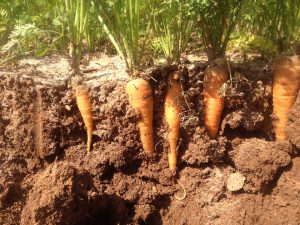
Photo by Full Earth Farm.
Yes, that’s right! We made it through the hottest part of the year and we are looking ahead to fall just around the corner! I am excited to be discussing September and what we can do to prepare for fall in the garden. As the nighttime temperatures start to cool down, we are given many more options.
For annual color plantings in September, try Ageratum, Celosia, Zinnias, and Wax Begonia to add fall color to your landscape. Bulbs will also add color, texture, and pattern to a bed. If you have some extra space, a variety of elephant ears could really accent a bed or you could always go with the classic calla, narcissus or zephyr lily. Popular vegetables to plant in North Florida in September are broccoli, carrot, cabbage, and collards. See Vegetable Gardening in Florida This is also the time of year to establish strawberry plants. Some great herbs to get started are Mexican tarragon, mint, rosemary, and basil.
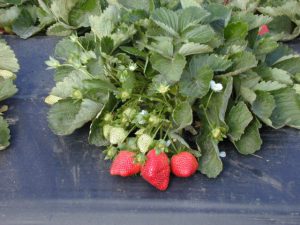
Image Credit: Matthew Orwat UF/IFAS Extension Washington County
There are many things that can be done in your lawn during September. Monitoring your lawn for its health and potential insect pests is important this time of year. Common insects to scout for are fall armyworms, chinch bugs, mole crickets, and sod webworms. The last fertilizer application should be done by the middle to end of September. Make sure you choose a fertilizer with little to no phosphorus unless a soil test shows differently. To maintain a healthy lawn, avoid weed and feed products and only apply herbicides in areas with high infestations of weeds. Weed and feed products are not recommended because the timing of when to fertilize and the timing of the weed killer is not always the same. The best management practice is to use a separate treatment for weeds and when possible spot treat weeds.
If you already have bulbs in your landscape from previous growing seasons, this is the time to divide and replant those that are big. You can also add organic matter to new planting areas. Continue working on your vegetable plants and prepare them for either transplants for a fast start, or plants seeds for more variety. Throughout your landscape, it is important that plants are getting the right amount of water as we go in and out of wet and dry weather this time of year.
October will be here before we know it in just a couple of weeks. Look out for the next article to come. We will be getting into the cooler nights and more options for planting vegetables and herbs!
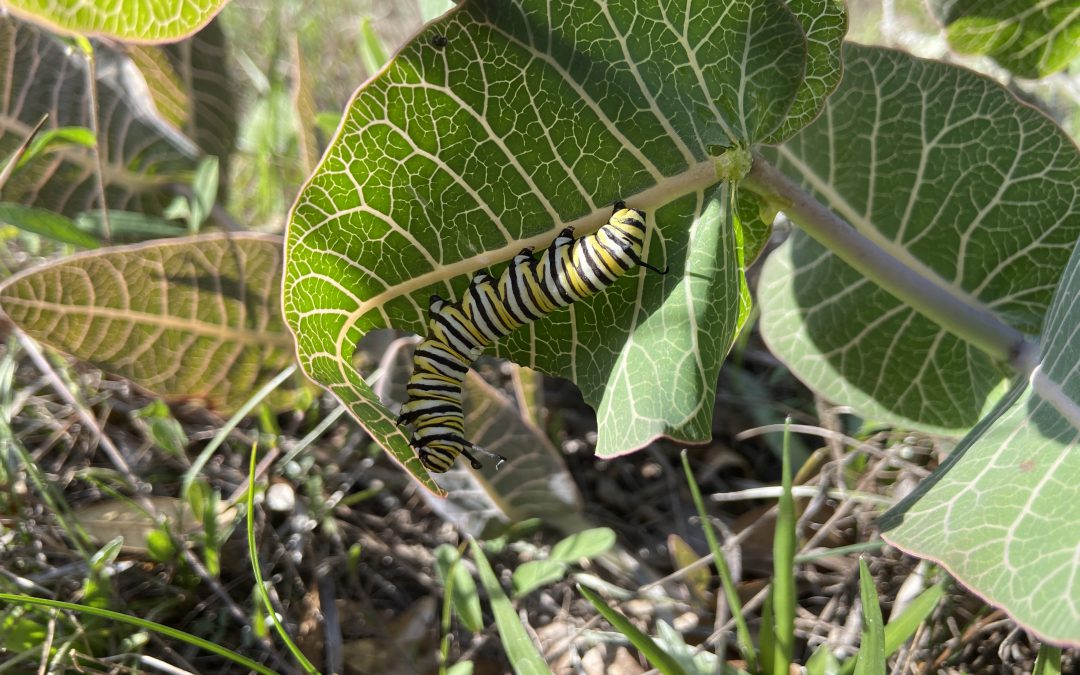
by Mary Salinas | Aug 20, 2021
On August 12, 2021, our panel answered questions on a wide variety of landscape topics. Maybe you are asking the same questions, so read on!
Ideas on choosing plants
What are some perennials that can be planted this late in the summer but will still bloom through the cooler months into fall?
Duranta erecta ‘Sapphire Showers’ or ‘Gold Mound’, firespike, Senna bicapsularis, shrimp plant, lion’s ear
Where can native plants be obtained?

Dune sunflower, Helianthus debilis. Photo credit: Mary Salinas UF/IFAS Extension.
Gardening Solutions: Florida Native Plants – see link to FANN: https://gardeningsolutions.ifas.ufl.edu/plants/ornamentals/native-plants.html
What are some evergreen groundcover options for our area?
Mondo grass, Japanese plum yew, shore juniper, ajuga, ferns such as autumn fern.
What are some ideas for partial morning sun butterfly attracting tall flowers to plant now?
Milkweed, salt and pepper plant, swamp sunflower, dune sunflower, ironweed, porterweed, and salt bush.
I’m interested in moving away from a monoculture lawn. What are some suggestions for alternatives?
Perennial peanut, powderpuff mimosa, and frogfruit.
We are new to Florida and have questions about everything in our landscape.
Florida-Friendly-Landscaping TM Program and FFL Web Apps: https://ffl.ifas.ufl.edu/
https://ffl.ifas.ufl.edu/resources/apps/
UF IFAS Gardening Solutions: https://gardeningsolutions.ifas.ufl.edu/
What are some of the top trends in landscaping today?
Houseplants, edible gardens, native plants, food forests, attracting wildlife, container gardening, and zoysiagrass lawns
Edibles
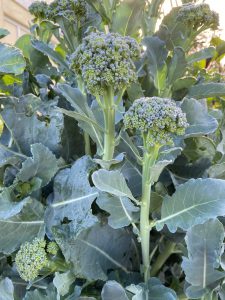
Artwork broccoli is a variety that produces small heads. Photo credit: Mary Salinas UF/IFAS Extension.
What vegetables are suitable for fall/winter gardening?
Cool Season Vegetables: https://gardeningsolutions.ifas.ufl.edu/plants/edibles/vegetables/cool-season-vegetables.html
North Florida Gardening Calendar: https://edis.ifas.ufl.edu/publication/EP451%20%20%20
Florida Vegetable Gardening Guide: https://edis.ifas.ufl.edu/publication/vh021
How can I add herbs to my landscape?
Herbs in the Florida Garden: https://gardeningsolutions.ifas.ufl.edu/plants/edibles/vegetables/herbs.html
My figs are green and hard. When do they ripen?
Why Won’t My Figs Ripen: https://www.lsuagcenter.com/profiles/rbogren/articles/page1597952870939
What is best soil for raised bed vegetable gardens?
Gardening in Raised Beds: https://edis.ifas.ufl.edu/publication/EP472
And there are always questions about weeds
How can I eradicate cogongrass?
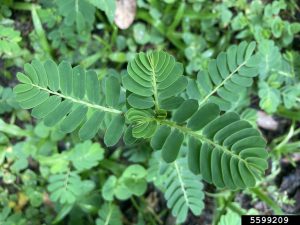
Chamber bitter is a troublesome warm season weed in our region. Photo credit: Brantlee Spakes Richter, University of Florida, Bugwood.org
Cogongrass: https://edis.ifas.ufl.edu/publication/WG202
Is it okay to use cardboard for weed control?
The Cardboard Controversy: https://gardenprofessors.com/the-cardboard-controversy/
What is the best way to control weeds in grass and landscape beds?
Weed Management Guide for Florida Lawns: https://edis.ifas.ufl.edu/publication/EP141
Improving Weed Control in Landscape Planting Beds: https://edis.ifas.ufl.edu/pdf/EP/EP52300.pdf
Landscape practices
Can ground water be brackish and stunt plants?
Reclaimed Water Use in the Landscape: https://edis.ifas.ufl.edu/publication/ss545
How can I prevent erosion from rainwater runoff?
Stormwater Runoff Control – NRCS: https://www.nrcs.usda.gov/wps/portal/nrcs/detail/national/water/?cid=nrcs144p2_027171
Rain Gardens: https://gardeningsolutions.ifas.ufl.edu/design/types-of-gardens/rain-gardens.html
And https://gardeningsolutions.ifas.ufl.edu/pdf/articles/rain-garden-manual-hillsborough.pdf
What is the best time of the year to propagate flowering trees in zone 8B?
Landscape Plant Propagation Information Page – UF/IFAS Env. Hort: https://hort.ifas.ufl.edu/database/lppi/
Which type of mulch works best on slopes greater than 3 percent?
Landscape Mulches: How Quickly do they Settle?: https://edis.ifas.ufl.edu/publication/FR052
When should bulbs be fertilized?
Bulbs and More – UI Extension: https://web.extension.illinois.edu/bulbs/planting.cfm
Should I cut the spent blooms of agapanthus?
Agapanthus, extending the bloom time: https://gardeningsolutions.ifas.ufl.edu/plants/ornamentals/agapanthus.html
http://blogs.ifas.ufl.edu/wakullaco/2020/10/07/extending-bloom-time/
Plant questions
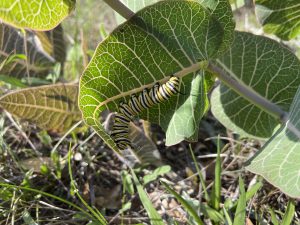
Monarch caterpillar munching on our native sandhill milkweed, Asclepias humistrata. Photo credit: Mary Salinas, UF IFAS Extension.
I planted native milkweed and have many monarch caterpillars. Should I protect them or leave them in nature?
It’s best to leave them in place. Featured Creatures: Monarch Butterfly: https://edis.ifas.ufl.edu/pdf/IN/IN780/IN780-Dxyup8sjiv.pdf
How does Vinca (periwinkle) do in direct sun? Will it make it through one of our panhandle summers? Can I plant in late August?
Periwinkles and No more fail with Cora series: https://gardeningsolutions.ifas.ufl.edu/plants/ornamentals/periwinkles.html#:~:text=Plant%20your%20periwinkles%20where%20they,rot%20if%20irrigated%20too%20frequently.
Insect and disease pests
What to do if you get termites in your raised bed?
The Facts About Termites and Mulch: https://edis.ifas.ufl.edu/publication/IN651
How to combat fungus?
Guidelines for ID and Management of Plant Disease Problems: https://edis.ifas.ufl.edu/publication/mg442
Are there preventative measures to prevent diseases when the humidity is very high and it is hot?
Fungi in Your Landscape by Maxine Hunter: http://blogs.ifas.ufl.edu/marionco/2020/01/16/fungi-in-your-landscape/
If you missed an episode, check out our playlist on YouTube https://www.youtube.com/watch?v=bp0HfdEkIQw&list=PLhgoAzWbtRXImdFE8Jdt0jsAOd-XldNCd
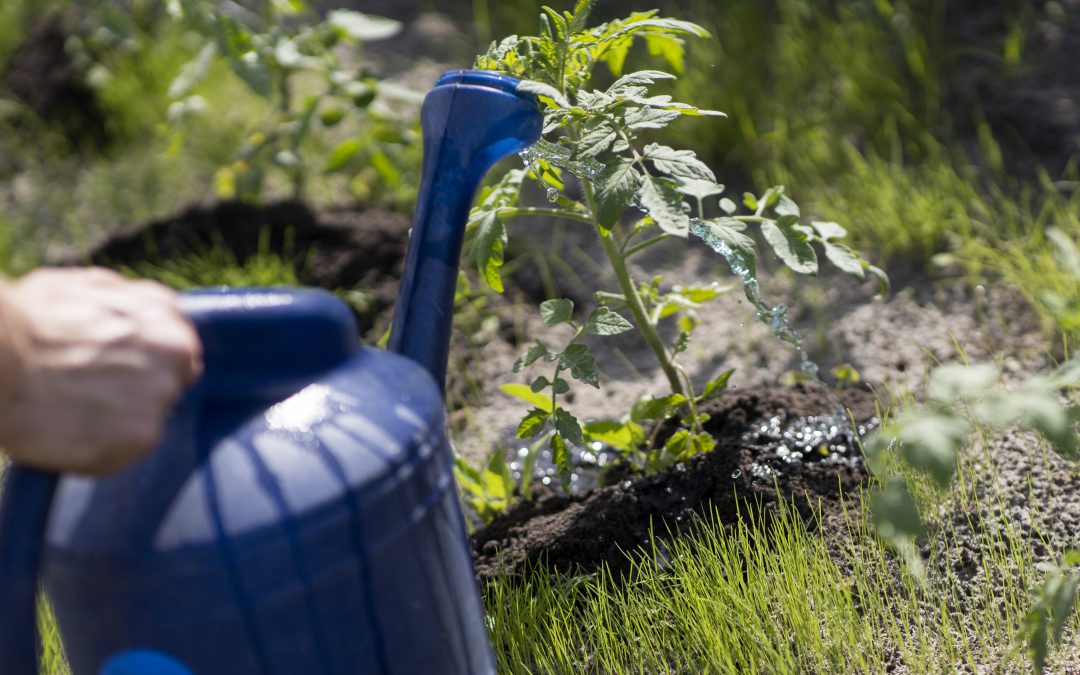
by Ashley Stonecipher | Aug 5, 2021
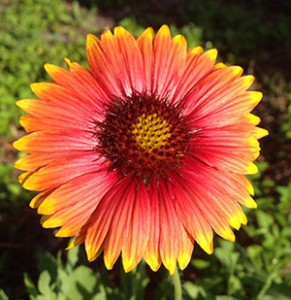
Native Gaillardia. Photo courtesy UF/IFAS.
The hottest days of the summer are here and you might be thinking, “There is no way something could survive this heat!”. You might also be wondering “What can I do in my landscape?” Well, you are correct – it is hot and there are not many plants that thrive in this type of weather, but the good news is we are at the end of the summer season and there are things we can begin to do to get ready for fall. It’s not too late to get the last of the summer vegetables going such as lima beans, cucumbers, eggplants, and peppers. Many cool season crops can also be planted by seed now and tomatoes will thrive going into the fall season. See Vegetable Gardening in Florida
There are some heat-tolerant annuals like vinca, gaillardia, bulbine, and coleus that can be planted now in the landscape. See Annuals. Any time of the year, even late summer, bulbs like Aztec Lily, Butterfly Lily, Walking Iris, and Spider Lily can be planted. See Bulbs for Florida. Not many herbs do well in our Florida sun this time of year, but Bay Laurel, Ginger, Mexican Tarragon, and Rosemary can be planted as transplants now but not as seeds just yet. See Herbs.
August and late summer is the time of year that you may be seeing damage in your lawns. This could be caused by insects, disease, or irrigation failure. It is important to determine the cause, so the proper remedy is used. Some ways to avoid lawn damage are checking your mower blades regularly and making sure they are sharp. Also only cut the top one third of the blade of grass to not stress it in the heat of the day. It is good practice to test your irrigation clock and have a rain sensor. Some municipalities in north Florida prohibit the application of fertilizer during the summer rainy season from June to September so check with your local extension office. See Insect Management in Your Florida Lawn

You can become more self-sufficient by growing your own healthy food in your backyard. Photo by Molly Jameson.
There are some other maintenance measures you can take in August to help your landscape and prepare for the fall season. If older palm fronds are yellowing, this could indicate a deficiency in magnesium or potassium. Talk to your local agent or visit your local store for an appropriate palm fertilizer. See Palm Nutrition and Fertilization. Are you holding on to those beautiful fall mums or decorative Christmas poinsettias? Now is the time to pinch them back to allow time for buds to set for winter blooms. Finally, it is a good time to deadhead (remove old blooms) and fertilize flowering annuals and perennials. We’ve had substantial rain this summer, so keep in mind that the soil could be lacking nutrients. A soil test can give you data that indicates what you need for the up-and-coming growing season.
Information for this article can be found in the UF/IFAS EDIS publication: “North Florida Gardening Calendar” by Sydney Park Brown: ENH1190/EP451: North Florida Gardening Calendar (ufl.edu)

by Larry Williams | Jul 15, 2021
Q. One of my two fig trees has produced a few figs. The other one, which is the largest and healthiest tree, has never had a fig on it. Both where planted six years ago. Why is it not producing?
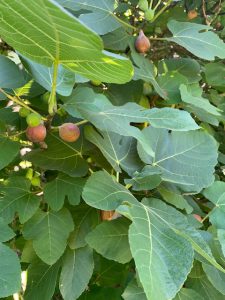
Mature fig tree with fruit. Photo credit: Larry Williams
A. It may be a matter of age and being overly vigorous. When a fruit tree is younger, it puts most of its energy into producing leaves and shoots. Until the plant becomes mature and slows down in the production of leaves and shoots, it will produce few to no fruit. It may take a year or two more for your tree to slowly and gradually switch from producing mostly leaves and shoots to producing and maturing some fruit. Patience is needed.
Be careful to not overdo it in fertilizing and/or pruning your fig tree. Too much fertilizer, especially nitrogen, or severely pruning the tree will result in the tree becoming overly vigorous at the expense of setting and maturing fruit. This includes fertilizer that the tree may pull up from a nearby lawn area. A tree’s roots will grow outward two to three times beyond its branch spread into adjacent lawn areas.
The end result of being heavy handed with fertilizing and/or overdoing it in pruning is the same – it forces the plant to become overly vigorous in producing leaves and shoots at the expense of producing and maturing fruit.
In addition, the following is taken from an Extension publication on figs and includes the most common reasons for lack of fruiting, in order of importance.
- Young, vigorous plants and over-fertilized plants will often produce fruit that drops off before maturing. If plants are excessively vigorous, stop fertilizing them. Quite often, three of four years may pass before the plant matures a crop because figs have a long juvenile period before producing edible quality fruit.
- Dry, hot periods that occur before ripening can cause poor fruit quality. If this is the case, mulching and supplemental watering during dry spells will reduce the problem.
- The variety Celeste will often drop fruit prematurely in hot weather regardless of the quality of plant care. However, it is still a good variety to grow.
- An infestation of root-knot nematodes can intensify the problem when conditions are as described in item 2.
- You could have a fig tree that requires cross-pollination by a special wasp. This is a rare problem. If this is the case, then it will never set a good crop. The best way to resolve this is to replace the plant with a rooted shoot of a neighbor’s plant you know produces a good crop each year.
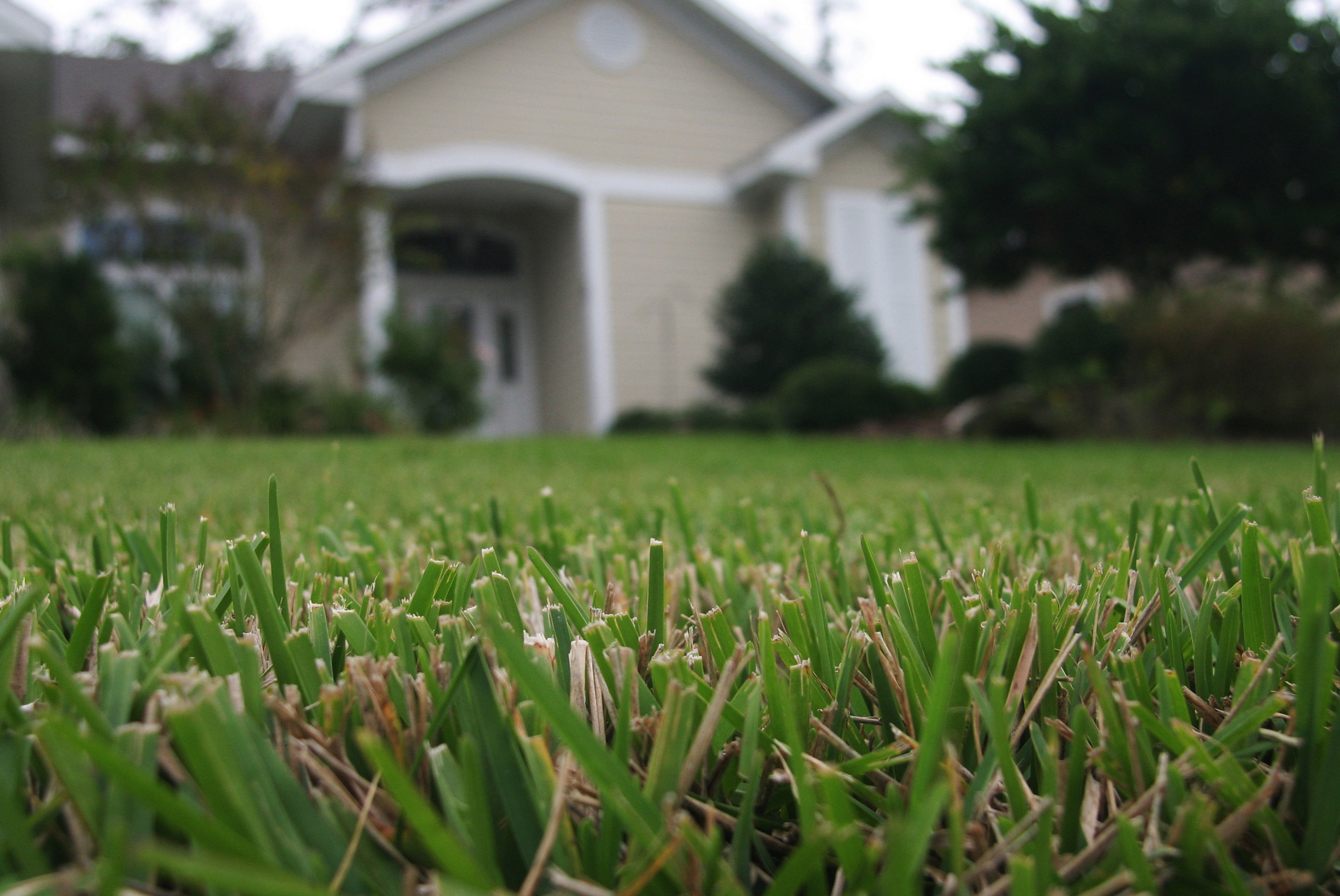
by Pat Williams | Mar 11, 2021
Our trees and vines are flowering and lawns are starting to green up naturally, but one glance at the calendar and it is still early spring. The last official frost date for the Florida panhandle can be into April depending on location. We know our day time and night time temperatures are still fluctuating every other day. We also know the stores and nurseries are stocked with shelves and pallets of fertilizer. So the big question is when can I fertilizer my lawn?

Overseeded ryegrass on a centipedegrass lawn.
My answer after years of practice is always it depends, but my non-scientific rule of thumb to homeowners is wait until you mow three weeks in a row and make sure you’re past the last frost dates for your area. If you need to mow three weeks in a row for height, then your lawn is actively growing and most likely we are into a temperature range good for fertilizer applications. If you apply fertilizer to a lawn that is dormant, the fertilizer will not be taken up by your roots and it can leach below the root zone wasting money while not improving the lawn and possibly causing environmental concerns.
With that said, there are some factors to consider. We always recommend doing a soil test first. This can be done in advance of spring. Your test results might indicate having sufficient nutrients in the soil, so not applying would save you money and the lawn would still look good. The soil test will also indicate what nutrients are in excess or lacking, then you can apply only the nutrients needed.
I have found that fertilizer is still very much misunderstood. When I ask homeowners whether they consider fertilizer to be medicine or a stressor, most will answer medicine and we all know if a little medicine is good, then a bit more is better. However, it is more accurate to think of fertilizer as a chemical stressor. If my lawn is unhealthy, then I force my lawn to grow and it can further weaken my plants. Think of it like this, if you’re not feeling well at night before you go to bed, should you consume one of those big energy drinks? Not if you want to sleep and hopefully feel better in the morning. Apply fertilizer when the lawn is ready and capable of having a positive response when spring fully arrives.

Wakulla County Extension office mixed species turf.
Here are some items you should know before you fertilize the lawn. Fertilizers used in Florida should have a license number that begins with F followed by a series of numbers. It is important to check your fertilizers before you apply. You need to know what type of turfgrass you have in your lawn. We have a lot of bahiagrass and centipedegrass lawns in the panhandle. Each will require a different regiment. You are only allowed to apply one pound of nitrogen per 1,000 square feet per application and you should never apply more than the recommended rate. I always refer to a childhood fable “The Tortoise and the Hare” when thinking about plant health. Slow and steady makes for a better lawn in the long run. This means you need to measure your lawn, understand how to calculate the nitrogen and then apply correctly with the right equipment and spreader patterns. We also recommend very little phosphorus (the middle number on the fertilizer bag 15-0-15) for Florida lawns. Our soils are usually sufficient and this is another item your soil test results will confirm.
Remember, your local Extension office is always here to help especially making sure you treat the lawn right. Think before you apply because your long-term goal is improving the lawn quality.
The Florida Fertilizer Label (https://edis.ifas.ufl.edu/ss170) and General Recommendations for Fertilization of Turfgrasses on Florida Soils (https://edis.ifas.ufl.edu/lh014). T. W. Shaddox, assistant professor; UF/IFAS Fort Lauderdale Research and Education Center, Ft. Lauderdale, FL 33314
Homeowner Best Management Practices for the Home Lawn (https://edis.ifas.ufl.edu/ep236). Laurie E. Trenholm, professor, Extension turfgrass specialist, Environmental Horticulture Department; UF/IFAS Extension, Gainesville, FL 32611.
Bahiagrass for Florida Lawns (https://edis.ifas.ufl.edu/lh006). L. E. Trenholm, professor, turfgrass specialist, Department of Environmental Horticulture; J. B. Unruh, professor, turfgrass specialist, UF/IFAS West Florida Research and Education Center; and J. L. Cisar, retired professor, turfgrass specialist, UF/IFAS Ft. Lauderdale REC; UF/IFAS Extension, Gainesville, FL 32611.
Centipedegrass for Florida Lawns (https://edis.ifas.ufl.edu/lh009). J. B. Unruh, professor, turfgrass specialist, UF/IFAS West Florida Research and Education Center; L. E. Trenholm, associate professor, turfgrass specialist, Environmental Horticulture Department; and J. L. Cisar, professor, turfgrass specialist, UF/IFAS Ft. Lauderdale REC; UF/IFAS Extension, Gainesville, FL 32611.



















